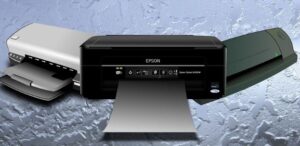Is collating your documents something you want when collate printing multiple pages something that always comes up? What does it actually mean, though?
In its basic form, the definition of collate printing is to collect or gather related information together. Any type of data, text, or document can be considered information.
Collated printing is useful if you are printing multiple large documents that must be kept in the correct order because it describes how prints are organized as they print.
Table of Contents
What Is Collate Printing?
Putting text or information together in a logical order is the definition of collating printing. Although the word “collate printing” has many different meanings, in the context of printing, it refers to a particular automated print setting. Collated documents in this context are those whose individual sheets are printed automatically as logical sets. This indicates that collated print jobs result in sets of documents that print out in the right order. Manual document collation is another option, just like it was back in the days of the printing press. But now that technology has advanced, we can take it for granted that even the most basic home printers can collate our documents for us automatically.
When Should Collate Printing Be Used?
Anytime you need multiple copies of a multi-page document that is intended to be read sequentially, collate printing should be used. Collated printing can save you more time the more pages there are in the document and the more copies you need.
Photo by Mark Ordonez For instance, collating the copies eliminates the need for manual page sorting after printing if you require handouts for a large group of people. Collated print jobs can help you save a ton of time, hassle, and paper cuts because the sheets of paper will already be grouped in sets with the correct order. Collate printing is very useful, so most home and office printers come with it as standard. Since most Microsoft Word and PDF documents are designed to be printed in collations, you have probably used collated printing more frequently than uncollated printing. The check box for collated copies is typically already checked whenever you print a document from your computer.
Collated copies are the default setting in Word when printing. Before binding leaflets and books, collate printing is also used. Automated collation saves time for both perfect bound and saddle stitch binding techniques, provided the document file is formatted correctly.

When Is It Appropriate To Print Without Columns?
Examples of prints that probably shouldn’t be compiled include business cards. The picture was taken by Marcin Wichary. Collate printing might not be the best option, depending on how you plan to use your copies and how your digital file is set up. Your application will ultimately determine the advantages of collated vs. uncollated data. Here are a few common scenarios in which you might want to uncheck the collate option in your printer settings:
A number of people are getting their business cards printed. Collate printing is probably not the best way to print a file that has all of the designs for a series of business cards saved in it, with each individual business card on its own page. In this situation, non-collate printing may be preferable because you can print multiple copies of each person’s business card before moving on to the next. This will make organizing and cutting the cards simpler. In the case of printing coupons, the same situation may occur.
Multiple copies of the same form are being printed. If you are printing multiple copies of the same form from the same file, you probably don’t want your documents to be collated. For each version, you will probably make one stack of papers and allow people to choose the one that applies to them.
Not complete sets of paper, but single sheets, are what you want to hand out. Non-collate printing is probably a better choice if you’d rather distribute copies of a document’s pages one at a time rather than all at once. This kind of situation might be used at trade shows, seminars, classrooms, or in specific office settings. Specify to the printer that you do not want your documents delivered to you collated if you are using professional printing services. Collation makes sense in the majority of situations, so the print shop may frequently assume you want the sheets collated if you don’t specify otherwise.
How To Collate Printing?
Collating is frequently turned on by default, but it can be changed in the print window that pops up before printing. The steps listed below can be used, for instance, to enable or disable collate in Microsoft Word.
- The desired document should be opened in Microsoft Word.
- Click the print icon, or click File and then Print.
- In the Print window, increase the number of copies, and then check or uncheck the collate option to enable or disable it.
In the print settings or print window that appears when printing a document, almost all document programs have a collate option.
Do you know what is collate printing? And can you learn about it?


